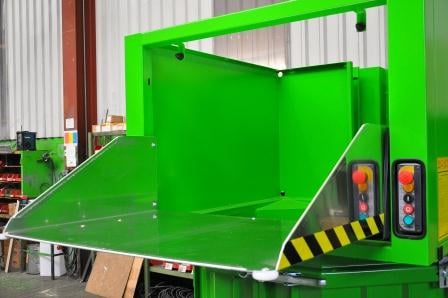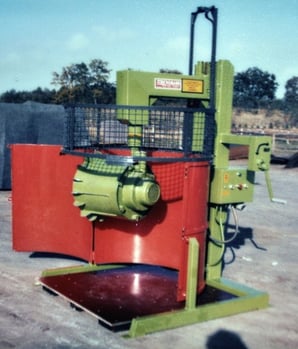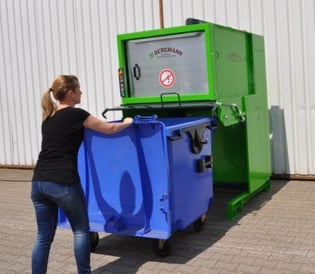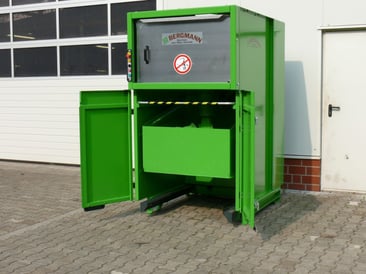
The Beginning The Bergmann Rotary Compactor range was first introduced in 1982 as an alternative to the traditional vertical baler. Designed to break down smaller volumes of waste with the benefit of continuous loading, all operators can use the machine without specialised training, ideal for large retail groups.
A bag is placed inside the machine on a pallet with a protective bag shield to prevent tearing. When the waste is loaded from above, the drum rotates and drops down tearing and compacting the waste into the bag.

The Development During the 1990’s, the Rotary Bin Compactor was introduced, offering an alternative method to the bag by using an 1100ltr bin locked in place. This was useful for businesses in hospitality where room is tight, reducing their bins on average from 5 or 6 to 1. A variety of drums were created to suit different waste streams, flat drums for plastic and polystyrene, spiked drums for wooden crates and knife attachments to prevent polythene from wrapping around the drum.

The Future In the late 2000’s the new Rotary Bag Compactor was launched, the 1400E, boasting a larger volume than its predecessor and bales weighing up to 600kg, it also uses 66% less energy to operate due to it being predominantly electrical driven as opposed to hydraulic.
In 2012, Sainsbury's bought over 300 of the 1400E’s to manage their food packaging waste across all supermarkets in the UK. The Bergmann Rotary Compactor range should be seen as an alternative to baling with extra benefits as described in this article (Rotary Compactor Vs Vertical Baler: How Do I Choose?).

If you would like to learn more about the Rotary Compactor range and how it could help your business, please contact us or call on 01522 692888.



